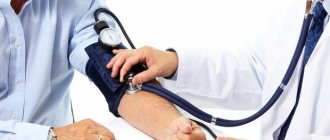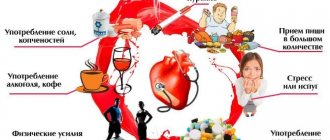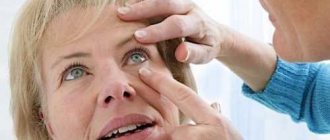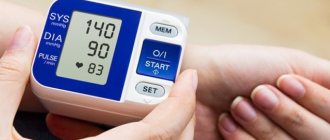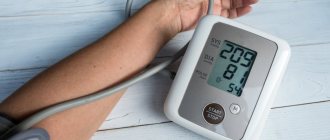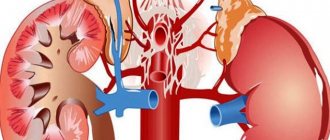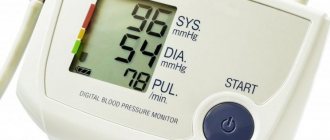Norm and deviations
Each organism is individual. The adaptive capabilities of every person are virtually limitless. The concept of normal blood pressure is quite relative. We can only talk about conditional frameworks and optimal indicators.
Blood pressure readings below can be considered a deviation:
- For men - 100/60;
- For women - 90/60;
- For older people - 110/70.
Both the general state of hypotension and a sharp drop in pressure, regardless of the reasons that led to this, cause unpleasant symptoms and deterioration in well-being. Particular attention is paid to patients aged 20 to 40 years, when any jumps in blood pressure are a priori perceived as alarming signals indicating health problems.
Main features
Symptoms of low blood pressure do not appear in all cases, given that some people live with levels below acceptable levels and feel great.
If there is an attack of a sharp decrease in pressure, then the symptoms are vivid and require immediate help:
- Pallor of the skin. Even fair-skinned people will experience noticeable pallor due to decreased blood pressure.
- Drops of sweat on the forehead and body even in the cold season and in a cool room. Hypotonic patients often characterize this condition as “cold sweat.”
- Chills, cold extremities.
- Decreased body temperature.
- Lips acquire a bluish tint.
- Complaints of headache, dizziness.
- Loss of energy, absent-mindedness, inability to complete work.
- Lack of air, drowsiness, desire to sleep.
- Discomfort from the gastrointestinal tract, most often nausea.
- Complaints about bright lights, loud sounds that irritate, lead to more stress.
In medical practice, a symptom of fainting has been recorded with a sharp decrease in blood pressure, which is dangerous by injuring the patient and causing additional complications.
On a note! An attack of a sharp decrease in blood pressure can be accompanied by both single symptoms and a complex of signs. Depending on the condition of a person with signs of hypotension, specific assistance is required that will improve the person’s well-being and exclude serious pathologies.
Prerequisites leading to a drop in blood pressure levels
It is possible to answer the question of why a person’s blood pressure decreases and what are the reasons for the progression of this condition only after a comprehensive study. In the vast majority of cases, problems with the cardiovascular or nervous system are the root cause of the development of hypotension.
A drop in blood pressure readings can occur under the following unfavorable circumstances:
- Change in the actual amount of blood in the body. A sharp drop in indicators is quite logical in case of massive bleeding, rapid dehydration;
- Slowing of the heart (decreased strength of contraction of the heart muscle). The organ pushes out blood poorly or the fluid fractions are too small. A sudden decrease in blood pressure and all subsequent symptoms can occur if a person suddenly gets out of bed in the morning after sleep. This can be encountered by those who have been in one static position for a long time, and then suddenly change their position or begin to make active movements;
- Infectious diseases;
- Due to negative factors of external or internal origin, the nerve endings that control blood pressure at a basic level may suffer.
To talk about hypotension, in particular when blood pressure drops suddenly and too quickly, is a serious problem in two cases. For pregnant women, too low blood pressure readings are fraught with abnormal phenomena during pregnancy itself, as well as problems faced by the fetus. The unborn child is in a state of chronic hypoxia. In such conditions, normal development and growth is impossible.
Hypotension, like hypertension, in elderly people can provoke ischemic processes and stroke conditions. It has been noted that a sudden drop in blood pressure during sleep in patients of the older age group can result in loss of hearing or vision. During the daytime, strokes and heart attacks, as well as other pathological processes of this kind, occur more often.
The causes of low blood pressure in a hypertensive person and an ordinary healthy person can be certain conditions associated with key aspects of the physiology of the human body. Simply put, in some situations, blood pressure may drop sharply for a while, and then return to normal again and this will be considered a normal reaction.
These conditions include:
- Heat combined with humid air (beach, bathhouse, public transport in the summer);
- High air temperature in work areas (in workshops, factories, factories, kitchens, offices);
- Regular exercise (subject to extremely high loads);
- Hard physical labor.
A sharp decrease in blood pressure and its symptoms may also indicate pathology. Treatment in this situation is mandatory. The main pathological conditions and circumstances under which hypotensive syndrome may occur:
- Vegetative-vascular dystonia (VSD);
- Cerebral atherosclerosis;
- Hypovolemia of pathological origin;
- Heart pathologies;
- Endocrine diseases;
- Heat (sunstroke) stroke;
- Anemia;
- Pregnancy;
- Injuries (including a history of previous injuries);
- Oncological diseases.
It is also worth considering the hereditary factor. Blood vessels, heart, and nervous systems can often “fail” due to individual susceptibility. For example, one person may experience constant dizziness and headaches, or even faint in a stuffy room. At the same time, the other person will not experience any discomfort in a similar situation.
What is the blood pressure of a hypertensive patient?
Doctors recognize normal blood pressure levels as 120 to 80 mmHg. If it is higher than normal, a diagnosis of hypertension is made, and if it is lower, hypotension is diagnosed. Blood pressure in hypertensive patients can change throughout the day, and short-term increases are caused by physical activity and poor lifestyle. Blood pressure can also rise sharply due to nervousness.
Hypertension is a pathology in which elevated blood pressure levels depend on physiological and pathological factors:
- Emotional stress
- Mental fatigue
- Genetic predisposition,
- Age,
- Hormonal changes
- Overweight,
- Concussion and other brain injuries
- Pathologies of the endocrine system,
- Chronic, infectious diseases,
- Exceeding the permissible cholesterol level.
The normal blood pressure of hypertensive patients depends on the degree of the disease:
- 1st degree or mild: systolic blood pressure from 140 to 160 mmHg, diastolic from 90 to 99 mmHg,
- Grade 2 or moderate: systolic blood pressure from 160 to 180 mm. Hg, diastolic - from 100 to 110 mmHg,
- Grade 3 or severe: blood pressure remains stable above 180 to 110 mmHg.
Clinical picture
Arterial hypotension manifests itself with a number of colorful symptoms. Often the clinical picture is so colorful that it is almost impossible to confuse a drop in blood pressure with any other condition.
Main symptoms:
- Severe pallor of the skin;
- Blueness of the mucous membranes and nasolabial triangle;
- Cold, profuse sweat on the face all over the body;
- Headache;
- Cold extremities;
- Drowsiness;
- The veins collapse;
- Feeling of numbness, severe paresthesia;
- Noise in ears;
- Temporary visual impairment;
- Feeling dazed.
The more sudden and severe the drop in blood pressure, the more severe the symptoms will be. Rarely can a person completely lose orientation in space. He will stagger, get lost in time and space, not recognize the people and place where he is. This occurs especially often if hypertension is replaced by hypotension.
Special situation
The most common situation is too active prevention of a hypertensive crisis. The patient may be given antihypertensive medications that are too strong and in large dosages to lower blood pressure.
As a result, the initially high levels of systolic and diastolic pressure decrease sharply, and the body does not have time to adapt to new conditions. The situation can develop similarly if you haphazardly take medications for hypertension at home, choose a medication for high blood pressure without the knowledge of your doctor, or change the dosage at your own discretion.
Folk remedies for increasing blood pressure
If blood pressure has decreased slightly, then you can use old and proven folk remedies.
For example, you can use:
- One tablespoon of honey sprinkled with cinnamon on top, washed down with hot tea or coffee. Even people with diabetes can afford honey in small quantities.
- St. John's wort decoction reduces the effect of calcium blockers.
- Aromatherapy with mint or rosemary.
- Massage the scalp, back of the head and neck. Apply gently, without pressing, with your fingertips.
Other useful tools:
- Pharmaceutical stimulant preparations to relieve drowsiness and fatigue: tincture of Eleutherococcus, Ginseng or Chinese Schisandra under the supervision of pressure and the attending physician.
- In case of severe hypotension, to narrow the lumen of blood vessels, take Norepinephrine (a synonym for norepinephrine, which increases blood pressure) and cholinergic drugs under the supervision of a physician.
Competent therapy to maintain working condition is not enough. A number of measures should be taken that will help not only eliminate, but prevent unwanted drops in blood pressure.
Why are drops in blood pressure dangerous?
Hypotension in the vast majority of cases does not pose any serious danger to the body compared to hypertension. However, the very fact that a person is prone to a sharp decrease in blood pressure indicates that the body still has some problems and they need to be solved immediately.
Chronic hypotension suffers from constant fatigue, drowsiness, and weakness. They cannot lead an active lifestyle or engage in certain activities. An adult at any age may encounter the following problems arising from low blood pressure:
- Loss of consciousness at any time, which can lead to injury;
- Memory deterioration, all cognitive qualities of a person suffer;
- Poor coordination;
- Vision problems;
- “Bouts” of disorientation;
- Malfunctions of the heart.
Pregnant women and the elderly are especially at risk for sudden drops in blood pressure. This was already discussed earlier. Treatment of such conditions is carried out only under the supervision of a competent specialist.
What are the symptoms of a sharp decline?
If there is no tonometer nearby, the following symptoms will indicate hypotension:
- feeling of weakness throughout the body;
- dizziness and loss of orientation in space;
- orthostatic collapse (when a person lay down, he felt a little better, and he decided to stand up sharply - the room will begin to spin around him, his legs will not obey, which will lead to a fall);
This occurs due to the redistribution of blood in the vascular bed. When the body changes position due to hypotension, the heart does not have time to raise the pressure to a level that will ensure sufficient blood supply to the brain. It seems to “leak” into the dilated vessels of the limbs and torso, leaving the head with nothing.
- darkening of the eyes (due to oxygen starvation of the cerebral cortex);
- intolerance to external heat or cold;
- deterioration of the condition in a stuffy room (the heart muscle cannot compensate for the increasing oxygen deficiency in the tissues by increasing its work);
- weakening and increased heart rate.
Basically, with a sharp decrease in pressure, hypertensive patients suddenly begin to feel weakness and powerlessness. They become incapable of basic physical and mental effort.
What to do if there is a sudden drop in blood pressure
Every person should know what to do if their blood pressure drops sharply. First aid consists of the following points:
- The patient is placed in a horizontal position, legs slightly raised above body level. The first sign that a person feels better is that the normal color of the skin is restored;
- Unbutton the collar, remove the scarf, tie, do everything so that the person can breathe freely;
- Open the windows in the room to provide fresh air;
- The person is given strong, warm, sweet tea to drink.
You should avoid alcohol and coffee. You cannot pour cold water on a person or let them sniff ammonia. If it is not completely known what exactly caused this condition, no caffeine-containing products are given. No drug with systemic effects is taken without permission. This can only worsen the condition and also complicate further diagnosis.
How to normalize the condition
Low blood pressure is fraught with fainting, rapid heartbeat, resulting in a coma with a fatal end. In addition, a hypotensive crisis may indicate latent bleeding, dehydration, or acute sepsis. In combination with arrhythmia, it warns of a developing stroke or heart attack.
If a hypertensive patient’s blood pressure rapidly drops, it is better to immediately call an ambulance.
First aid
Before doctors arrive, urgent measures should be taken. The patient should be placed on his back, with his legs slightly raised to the level of his head - this will improve blood supply to the brain. The head pillow is excluded.
The patient should be freed from tight clothing, a window or window should be opened, a swab with ammonia should be applied; essential oils of bergamot, mint, and camphor are effective.
Wipe your face with a damp cloth, give a glass of warm strong tea with cinnamon, a handful of raisins (70 g). You can drink coffee or pomegranate juice, eat something salty (10 g) - salt retains fluid in the body, thereby raising blood pressure.
Caffeine is contraindicated in patients who have had a heart attack, arrhythmia, or aortic stenosis.
The next step is half a tablet of aspirin in combination with tonic tinctures: lemongrass, leuzea, eleutherococcus. If the patient's condition allows, a contrast shower with rubbing the body with a towel, massage of the legs from feet to thighs, rubbing the abdominal area and lower back are indicated. You can stimulate the acupoint under your nose.
Medications
Medicines to increase blood pressure are used only after consultation with a doctor. The choice of drugs is individual. Their intake is controlled by a tonometer. The drugs are the best choice for frequent attacks of hypotension, but if a crisis occurs for the first time, herbal medicine (tonic tinctures, essential oils) can be the basis.
The following drugs are most effective:
- Cordiamine – activates brain metabolism, respiratory and vascular centers: 30 drops three times a day (one-time, you can take a double dose, excess will cause convulsions);
- Citramon (Askofen, Kaffetin) – stimulates the nervous system, raising blood pressure, relieves headaches: 2 tablets of one drug at a time;
- Fludrocortisone (Prednisolone, Dexamethasone) is a mineralocorticoid, used once to relieve a crisis, the dose is selected by the doctor, repeated use leads to dysfunction of all internal organs.
Frequent attacks of hypotension suggest the prescription of vitamin complexes.
Massage and physiotherapy
There are special energy points on the human body, massage of which leads to an increase in pressure. There are only three of them. The first is localized in the middle of the second toe, under the nail. Massaging it until pain appears relieves dizziness. The second is on the outside of the big toe, in the lower corner. It is usually massaged with a mini-ball in circular passages. The third is located in the popliteal cup, it is kneaded in the morning for several weeks in a row, pressing the acupuncture point 20 times.
There are physiotherapeutic procedures that have the ability to tone blood vessels. These include:
- circular shower - hydrotherapy, which, using a special installation, causes an irritating effect on the vessels, which causes vasospasm, increased blood pressure: course - 15 procedures of 5 minutes, daily;
- pouring water from a bucket (temperature about 20 ºС): three buckets, thirty sessions, after the procedure the skin is rubbed dry until redness appears;
- cryotherapy (-160 ºС): the patient is immersed in a cryochamber for 5 minutes, cryogas powerfully spasms the blood vessels, raising the pressure, the procedure is daily, for a couple of weeks;
- electric currents of the decimeter range - electrodes are placed on the area of the adrenal glands, which stimulates the work of the endocrine glands, balances hormonal levels, stimulates the production of catecholamines, which spasm blood vessels: 10 procedures for 15 minutes (the effect can be enhanced by using pads soaked in a 5% calcium chloride solution, which are placed under the electrodes);
- pain is relieved by electrophoresis with anesthetics (Lidocaine, Trimecaine, Novocaine): 10 procedures for 20 minutes, daily;
- electrophoresis with vasoconstrictors (Adrenaline, Mezaton) on the collar area stops fainting: 10 minutes every day, up to 15 procedures;
- ultraviolet light activates photochemical reactions, causing resistance to overloads: course - 20 sessions with increasing irradiation time according to the doctor’s recommendation;
- pearl, oxygen, radon baths - improve microcirculation, tone blood vessels: water temperature is equal to body temperature, 10 baths for 10 minutes.
Contraindications include ischemic disease, heart rhythm disturbances, infections, and a tendency to thrombosis.
Exercises
Hypotension is quickly overcome by breathing exercises: the blood is saturated with oxygen, balancing metabolism. Strelnikova's exercises are shown: 8 intense inhalations and exhalations, then 5 seconds of rest, natural breathing. A total of 12 approaches.
What foods will increase blood pressure
There are no strict recommendations on nutrition for hypotension. The basis of the diet should be sea fish containing OMEGA-3 acids, which strengthen blood vessels. In addition, you should pay attention to:
- salt increases the volume of fluid circulating in the bloodstream, helps relieve hypotension: herring, cheese, pickled cabbage, cucumbers, tomatoes (maximum dose - 15g);
- spices (cinnamon, ginger, turmeric) – slightly constrict blood vessels, regulate the activity of the endocrine glands;
- oatmeal and cereals cover the deficiency of folic acid and vitamin B12 - this relieves anemia during hypotension;
- baked goods, sweets (honey, candies, dried fruits, chocolate) - increase sugar, that is, blood pressure;
- vegetables and fruits of bright colors contain folic acid, which means they relieve hypotension - broccoli, spinach, sorrel, lemon, orange, pomegranate, rowan;
- Wheat sprouts - a storehouse of amino acids, that is, a powerful tonic that stimulates the vascular wall, is prepared independently as follows: the washed grains are laid out on a saucer in one row, filled with 1 cm of water, covered with gauze. Place in a warm place, water for three days, chew the sprouted wheat on an empty stomach, a tablespoon at a time.
For hypotension, it is recommended to eat cheese and milk daily - sources of B vitamins; potatoes, corn, buckwheat – starch-containing products; adaptogens - tonic tinctures from the pharmacy (Leuzea, ginseng, licorice); liver, nuts.
Drinking regimen is very important for hypotension, since dehydration can be its trigger. Water should be consumed at least 1.5 l/day, preferably mineral water, as this has a beneficial effect on water-salt metabolism. Sometimes, once a day, you can allow a glass of water with salt, but only after the doctor's permission.
Drinks containing caffeine are consumed with caution, as they provoke tachycardia, wash out calcium, which changes the elasticity of the vascular wall and harms the nervous system. Coffee with cognac gives a quick rise in blood pressure, but the effect is short-lived.
“Vitamin mixtures” based on ascorbic acid, when used regularly, will make it possible to say goodbye to primary hypotension forever: green smoothies, pomegranate juice, rosehip infusion, sea buckthorn, orange juice. They are preferable to sweet soda, which contains caffeine, increases blood pressure, but also has many side effects.
Finally, alcohol has the ability to raise blood pressure, but at the same time dehydrates the body. Reasonable doses of sweet and semi-sweet wine do not exceed 150 ml per day.
Treatment of hypotension
What to take for hypotensive patients, how to treat the pathology, what prohibitions to adhere to, is decided only by the attending physician. It is important to undergo a comprehensive examination, fully examining the patient’s condition.
The main components of complex therapy for hypotensive patients:
- Diet therapy;
- Taking medications to tone blood vessels and strengthen the heart, as well as to stabilize the functioning of the nervous system;
- Sports, active lifestyle;
- Physiotherapy (magnetic therapy, creotherapy, gravitational influence).
Patients are advised not to abuse any pharmacological products: each pill taken haphazardly can lead to unpleasant consequences. It is also very important to promptly treat all chronic ailments.
How to help the victim
A hypotensive person does not experience acute symptoms of illness, since his body has already adapted to deviations from the norm over many years. And if the blood pressure of a stranger or loved one suddenly drops, what should you do? After all, the victim may lose his balance, fall, or lose consciousness.
You can't get lost and panic. The help of others is extremely important for the patient, so actions must be competent and clear:
- It is necessary to place the patient on the floor or sofa.
- Provide oxygen access.
- Unbutton your shirt collar, remove your tie, shoes, and belt.
- Grind the whiskey with ammonia.
- Give the victim warm water.
- If it is determined that the cause of the exacerbation is gastric bleeding, place a cold compress or a heating pad with ice on the abdomen.
Preventive actions
Prevention of hypotension and sudden drops in blood pressure comes down to following the following recommendations:
- Adequate rest - sleep should be at least 8 hours;
- You cannot change your body position suddenly (either in the morning or at any time of the day);
- Refuse a hot bath in favor of a contrast shower;
- Take an active life position;
- Eat a balanced diet;
- To refuse from bad habits.
A healthy lifestyle is the basis for good health. Basic rules will allow you to prolong your youth, protect your body from many pathologies and always feel good.
Did you like the article? Save it!
Still have questions? Ask them in the comments! Cardiologist Mariam Harutyunyan will answer them.
Ivan Grekhov
Graduated from the Ural State Medical University with a degree in General Medicine. General practitioner
Hypotension: Why PRESSURE drops and WHAT to do
If a decrease in blood pressure occurs frequently and blood pressure values are very different from normal, you should not wait until it goes away on its own or try to cope with the situation on your own, you should immediately consult a doctor and get diagnosed. Although hypotension is considered less dangerous than hypertension, with a sudden attack and lack of timely treatment, irreversible complications and even deaths are common.
The reasons why a person’s blood pressure drops are varied and numerous. Hypotension can bother even healthy people who lead an active lifestyle, not burdened by bad habits.
Low blood pressure or hypotension is not as dangerous to health as hypertension and is much less likely to be complicated by myocardial infarction or stroke, but frequent feelings of weakness, drowsiness and headaches significantly reduce a person’s quality of life.
Main reasons for pressure drop
Hypotension has two forms - acute and chronic , the causes of which are of different nature.
Classification of hypotension:
1. Acute form.
2. Chronic form:
- primary chronic arterial hypotension;
- secondary chronic arterial hypotension.
Subscribe to our INSTAGRAM account!
Causes of acute hypotension
If the pressure drops significantly in a short period of time, we are talking about acute symptomatic hypertension , which can be a symptom of serious life-threatening pathologies:
- acute myocardial infarction;
- intracardiac blockade;
- internal or external blood loss;
- pulmonary embolism;
- allergic reaction and the like.
This type of low blood pressure always occurs as a complication of serious pathology of internal organs or exposure to unfavorable external factors . In these cases, urgent medical attention is needed.
Primary chronic arterial hypotension is an independent disease; its causes are neurosis-like diseases of the parts of the brain responsible for vasomotor function. Pathology usually develops after prolonged psycho-emotional stress and stress.
Secondary chronic arterial hypotension is often one of the symptoms of another disease or acute pathological condition of the body.
Signs of low blood pressure are detected against the background of:
- rheumatism;
- heart rhythm disturbances;
- heart failure;
- intoxications;
- circulatory disorders;
- respiratory diseases;
- mental trauma;
- brain injuries;
- endocrine diseases;
- alcoholism;
- diabetes mellitus;
- tuberculosis;
- stomach ulcers;
- anemia;
- hepatitis A;
- pancreatitis;
- overdose of antihypertensive drugs.
What can cause low blood pressure in healthy people?
The reasons for low blood pressure in a healthy person can be:
1. Fasting and, as a result, insufficient intake of nutrients and vitamins C, E, B5 necessary for normal life.
2. Physiological hypotension appears over time in professional athletes. For them, this happens as a result of constant physical overload. The heart muscle also trains, gets used to heavy loads, begins to contract less frequently, and as a result, blood pressure levels drop.
3. A sharp change in weather and climatic conditions can also cause a decrease in blood pressure in the vessels. This is affected by increased humidity and ambient temperature, for example in a bath or sauna, electromagnetic fields and radiation levels.
4. Constantly low blood pressure is characteristic of people with a hereditary predisposition to this.
5. Hypotension is often a consequence of decreased vascular tone.
In a normal state, the vessels should quickly narrow and expand; if for some reason this mechanism is disrupted, the reaction slows down, as a result, in the vessels of the heart and brain, the blood pressure in the arteries decreases, the organs experience oxygen starvation and can no longer function optimally mode.
What to do if your blood pressure drops (home methods)
To help a person who has symptoms indicating a decrease in blood pressure, it is necessary to create conditions for blood flow to the brain.
- To do this, if possible, place him so that his head is below the level of his feet, or sit him down and bend his head to his knees.
- Provide fresh air and loosen tight clothing.
- Force yourself to breathe deeply.
- Give ammonia a whiff.
- Massage the ears or the central part of the back of the head.
- Spray your face with cold water.
- Drink strong sweet tea or coffee, but this is effective for those who rarely drink it.
- You can offer not very strong brine or other salty foods. Salt retains water in the body, and thus blood pressure increases.
- A good remedy is honey with the addition of cinnamon and lemon.
- Offer to eat chocolate or candy.
- Available medications include Citramon or caffeine.
Critically low numbers
If a person with normal blood pressure (120/80) drops blood pressure below 100/60 mmHg. Art., you can already make a diagnosis of “hypotension”.
The condition is considered dangerous if the blood pressure drops to 80/60 mmHg. Art. but everyone is different. If a patient develops symptoms of a rapid deterioration in their general condition, if help is not provided, fainting and sometimes coma may develop.
Blood pressure has a high probability of death if the upper reading drops to 70-60 mmHg. Art., and the lower one will drop beyond the mark of 50 mm Hg. Art.
The blood pressure of a hypertensive patient can decrease without harm to his health and well-being by an amount of 20% of the usual blood pressure level . If your blood pressure drops significantly, you should urgently seek medical help.
Characteristic symptoms
If you do not have the opportunity to measure blood pressure, then you can suspect hypotension based on the symptoms. These include:
- apathy;
- drowsiness;
- pallor;
- increased sweating;
- emotional instability;
- absent-mindedness, forgetfulness;
- violation of thermoregulation, indicated by cold feet and hands;
- irritability;
- dizziness;
- sensitivity to climate and weather changes;
- headache, mainly in the frontoparietal or frontotemporal regions;
- motion sickness in transport;
- shortness of breath accompanied by palpitations during exercise.
In addition, hypotension is indicated by periodic fainting in crowded places or stuffy rooms, daytime drowsiness, difficulty falling asleep and sleeping at night.
Hypotonic people usually sleep for a long time, about 8-12 hours, have difficulty waking up and feel weak and lethargic in the morning.
Reasons for low blood pressure during pregnancy
Low blood pressure in women while pregnant can be a consequence of:
- physiological changes in the body;
- pathological processes caused by diseases.
Physiological reasons
In early pregnancy, blood pressure may drop slightly . This is a normal physiological phenomenon.
This happens because at this stage there is an active formation of the vascular network to nourish the fetus and hormones are released into the blood to relieve tension from the muscles so that a miscarriage does not occur.
These hormones relax not only the muscles of the uterine vessels, but act on the vessels of the whole body.
If the pressure drops slightly, nothing needs to be done, but if the pressure drops by more than 10 units, correction is needed.
The physical condition of a woman during this period is aggravated by:
- poor nutrition;
- stuffiness and crowds of people;
- chronic lack of sleep;
- dehydration;
- blood loss;
- acute stress or long-term constant stress.
Often the pressure drops during night sleep, the enlarging uterus puts pressure on large vessels and the blood supply to other organs is disrupted. If you stand up suddenly after sleep, you may feel dizzy from a sharp short-term decrease in blood pressure.
Pathological causes
In this case, the pressure decreases due to exacerbation or activation of pathological conditions, which, in the absence of pregnancy, do not affect blood pressure levels:
- with heart disease;
- cardiovascular diseases or vegetative-vascular dystonia;
- stomach ulcer;
- allergic diseases;
- infectious diseases;
- insufficient function of the endocrine glands - the thyroid gland, adrenal glands.
Often, with a slight decrease in blood pressure, a woman’s well-being does not suffer, but with a sharp jump downward, characteristic unpleasant symptoms appear:
- dull pain and heaviness in the head;
- weakness, dizziness;
- tinnitus;
- brokenness;
- drowsiness;
- irritability;
- shortness of breath on exertion.
A woman complains of loss of strength, she wants to lie down and do nothing. Sudden movements lead to darkening and flickering of spots in the eyes, a feeling of lightheadedness and dizziness.
This condition can result in fainting. Fainting is heralded by a sudden feeling of heat or cold and profuse sweating.
With low pressure, blood flows to organs and tissues more slowly and in a smaller volume, this leads to oxygen starvation of the heart, brain and other organs of not only the woman, but also the developing fetus:
- Insufficient blood supply can lead to disruption of the blood supply to the placenta, which threatens its detachment, miscarriage or premature birth.
- Insufficient supply of nutrients leads to hypoxia and low fetal weight.
- For a woman during childbirth, low blood pressure threatens weakening of labor, the risk of postpartum hemorrhage and a slow return of the uterus to its previous state.
Preventive measures
Concluding the article, I would like to give parting words to people with hypotension or those who have a tendency to lower blood pressure. The advice is aimed at encouraging a healthy lifestyle, free from alcoholic beverages, smoking, overeating and lack of exercise. So, you should follow the rules every day:
- Night sleep should last at least 8 hours;
- do as much physical exercise as possible;
- morning exercises are required, which must be started while still lying in bed;
- daily walks in the fresh air for 2 hours are required;
- meals should be at least three times a day, including dark chocolate and a reasonable amount of salt in the diet;
- set aside time for hardening procedures (morning contrast showers are very effective).
In addition, do things that bring positive emotions and joy. Avoid stressful situations. By following these simple rules, your quality of life will change for the better.
Conclusion
So, if a decrease in blood pressure occurs frequently and blood pressure values are very different from normal, you should not wait for it to go away on its own or try to cope with the situation on your own, you should immediately consult a doctor and get diagnosed.
Although hypotension is considered less dangerous than hypertension, with a sudden attack and lack of timely treatment, irreversible complications and even deaths are common. Published by econet.ru.
If you have any questions, ask them here
PS And remember, just by changing your consumption, we are changing the world together! © econet
Source: https://econet.ru/articles/184369-gipotenziya-pochemu-padaet-davlenie-i-chto-delat
Physiotherapy for hypotension
Physiotherapy plays an important role in normalizing blood pressure. The treatment complex includes therapeutic exercises, swimming, massage.
To normalize sleep and the nervous system, the patient may be prescribed medications containing only natural ingredients - from medicinal herbs. Tinctures of ginseng, leuzea and rhodiola help well.
Prevention
To prevent the influence of pathological causes and the development of repeated hypotonic attacks, prevention is necessary. Even when attacks of a sharp drop in pressure were observed only a few times, established recommendations must be followed:
- Do not get out of bed abruptly in the morning after waking up. People with this pathology need more time to sleep and wake up, respectively. You should get up smoothly and slowly.
- Drink 2 liters of liquid per day. This is a very important rule for restoring the proper functioning of the circulatory system.
- Include foods rich in vitamins in your daily diet, be sure to fruits and vegetables, and also try to minimize animal fats.
Fruits and vegetables to maintain normal blood pressure
- Follow the basic rules of balanced nutrition, eat only healthy food, dividing it into several small meals per day.
- Remember the need for healthy physical activity, but not intense. For hypotensive people, yoga and other sports that do not require strong endurance and excessive activity are most suitable.
A sharp drop in blood pressure provokes unpleasant symptoms and discomfort. But with regular adherence to measures to prevent the pathological condition, its development can be successfully prevented.
Doctors are not as wary of low blood pressure as they are of hypertension, which has a more negative impact on the patient’s overall health and is dangerous for the liver. As a rule, in rare cases, a slight decrease in indicators provokes irreversible consequences. But it is important to remember that a sharp decline is very dangerous and can provoke irreparable consequences.
Causes of blood pressure surges
A situation in which sudden surges in pressure occur is possible in both young and elderly people; even a child can experience this disorder. A sharp decrease or increase in pressure can be caused by the following reasons:
- allergic reaction;
- sudden rise from a lying position;
- loss of blood in a large volume;
- infectious diseases;
- poisoning;
- time zone change;
- long flight;
- change in climatic conditions;
- human weather dependence.
To prevent discomfort due to sudden jumps in pressure from bottom to top and vice versa, regular visits to the doctor are required to monitor the condition and provide timely assistance as needed. If necessary, a specialist can prescribe correction with medications. Most often in medicine, the following etiological factors and reasons are noted that explain why blood pressure drops sharply:
Cause of pressure surge
- excess weight;
- drinking coffee;
- smoking, alcohol addiction;
- working outside in cold weather;
- compression clothing;
- wearing the belt too tightly;
- sedentary monotonous work;
- genetic predisposition.
